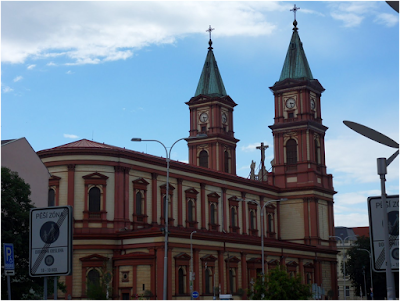The Czech Republic is a country located in central Europe. It is also called Czechia. It includes the historical provinces of Bohemia and Moravia along with the southern tip of Silesia, together often called the Czech Lands. In 2016 the Czech country adopted the name “Czechia” as an abbreviated easy name for the Czech Republic.
The Republic occupies the significant area of Bohemia, Moravia, and fraction of Silesia. These areas have been significant in the economy of east-central Europe because of its mineral deposits and afterward their industries. As the name signifies it was not always occupied by the Czechs. The fall down of the Austro-Hungarian Empire at the finish of World War I brought the Czechs and Slovaks jointly for the initial time as “Czechoslovaks.” The Czechs became the ruling cultural group in Czechoslovakia, a totally new state in which Germans and Hungarians lived jointly as not prepared citizens, bound to turn out to be unfaithful minorities bent on discouragement the self-governing constitution engendered by the country’s founders, Tomáš G. Masaryk and Edvard Beneš.
One-third of the German residents of Bohemia constituted the population in the 1930's. These residents act as an excuse for Nazi Germany to tear apart Czechoslovakia. During World War II Moravia and Bohemia existed politically only as a region of the Third Reich. Soviet troops occupied Czechoslovakia near the end of World War II.
Czechoslovakia was governed by a coalition after the war of communist and non-communist parties. Czechoslovakia remained the solitary democracy in this part of Europe in the interwar period. However, the Czech fraction of Czechoslovakia was engaged by Germany in World War II and was activist in 1945 by the armies of the United States and the Soviet Union. Thereafter the elements of a Stalinist market were installed. The Slovaks have a number of things in common with the Czechs but culturally and linguistically they are enough special that with the primary opportunity the Slovaks required separation. The Czech Republic and Slovakia detached their amalgamation quietly and cordially in 1993. Efficiently Slovakia was considerably backward as compared to the Czech Republic.
The Republic occupies the significant area of Bohemia, Moravia, and fraction of Silesia. These areas have been significant in the economy of east-central Europe because of its mineral deposits and afterward their industries. As the name signifies it was not always occupied by the Czechs. The fall down of the Austro-Hungarian Empire at the finish of World War I brought the Czechs and Slovaks jointly for the initial time as “Czechoslovaks.” The Czechs became the ruling cultural group in Czechoslovakia, a totally new state in which Germans and Hungarians lived jointly as not prepared citizens, bound to turn out to be unfaithful minorities bent on discouragement the self-governing constitution engendered by the country’s founders, Tomáš G. Masaryk and Edvard Beneš.
One-third of the German residents of Bohemia constituted the population in the 1930's. These residents act as an excuse for Nazi Germany to tear apart Czechoslovakia. During World War II Moravia and Bohemia existed politically only as a region of the Third Reich. Soviet troops occupied Czechoslovakia near the end of World War II.
Czechoslovakia was governed by a coalition after the war of communist and non-communist parties. Czechoslovakia remained the solitary democracy in this part of Europe in the interwar period. However, the Czech fraction of Czechoslovakia was engaged by Germany in World War II and was activist in 1945 by the armies of the United States and the Soviet Union. Thereafter the elements of a Stalinist market were installed. The Slovaks have a number of things in common with the Czechs but culturally and linguistically they are enough special that with the primary opportunity the Slovaks required separation. The Czech Republic and Slovakia detached their amalgamation quietly and cordially in 1993. Efficiently Slovakia was considerably backward as compared to the Czech Republic.


No comments:
Post a Comment